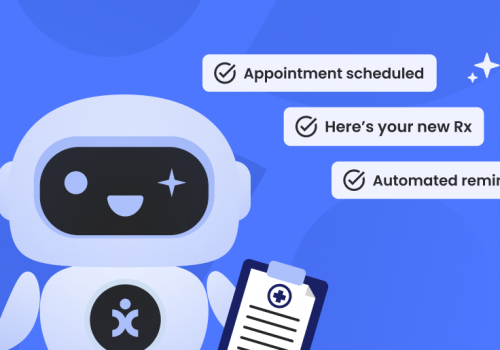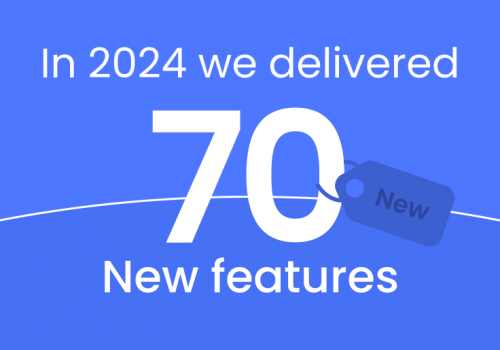Collaborative and Prosperous Workplace. What company doesn’t want to create a highly collaborative and prosperous workplace? Everyone wants to do this, but yet, not everyone manages to do it successfully. How successful you are coming down to a few factors. Firstly, how do you adapt to emerging trends in your industry? Are you the kind of business who closely monitors the latest tech and thinks of innovative ways that this tech can add value to your business? If digital transformation isn’t a top priority for you already, then you should make it a top priority today. According to one study, 70% of companies today already have a digital transformation strategy in place or are working on one.
Secondly, do you have a plan? Often, businesses miss opportunities for growth and improvement because they fail to plan accordingly. Remember that all of your actions have consequences and that individual actions don’t happen in a bubble. Sure, you can add a new platform or give your employees the latest headsets, but without an appetite for change, your employees might not be on board. Similarly, without appropriate training, employees might not use new tools and tech efficiently or effectively. In this sense, planning is about being deliberate about how you cultivate and inspire a collaborative work environment from the ground up.
Today we’re going to be looking at 7 ways you can create a collaborative and prosperous working environment. Let’s take a look.
1. Use an Omnichannel Platform
Omnichannel platforms and approaches have been on the rise in recent years as more and more companies realize its disruptive potential. Omnichannel platforms simplify the way we work by breaking down the walls between systems and teams. They also enhance both customer and employee experiences by offering a broader range of choices when it comes to communication and collaboration. Here are some of the key benefits of omnichannel platforms.
- They promote customer-centricity – This is all about giving customers more control over their experiences with your company. For many companies, this starts with communication channels. Some customers prefer to email, and others prefer to talk on WhatsApp or Facebook Messenger. Whatever the preference, you should be focused on accommodating it.
- Outcome focused – Because omnichannel platforms simplify processes, they allow companies to become more outcome-focused. You can design excellent customer journeys and eliminate pain points along the way.
- Data-driven approach – We’re in the age of Big Data where we are collecting tons of insightful information about customers every day. Omnichannel platforms present a great way to collect and analyze customer data all in one place. This data can then be used to action goals that increase revenues and improve customer experiences.
2. Make Collaboration a Priority
It’s one thing to provide employees with the tools they need to collaborate, but this on its own isn’t’ enough. New applications are great, but an app can’t fix a workplace culture that’s broken at its core. Here are a few ways you can make collaboration a priority and create a collaborative work culture.
- Consider employee engagement programs – Positive reinforcement is a great way to encourage more participation from your employees.
- Diversify your workplace – At its core, collaboration is about exchanging ideas and information. There needs to be new ideas and experiences flowing in, and there needs to be a buzz around these ideas. One great way to do cultivate this is to focus on diversity in your workplace. This can mean diversity of people, or diversity of thought. Everyone has different backgrounds and life experiences, and everyone has something different to bring to the table.
- A shared vision or purpose – A key to collaborative working is getting everyone on board. Do your employees have a shared vision? Do they know what value they add to your business and what their role is in the wider business? All employees should have a clear idea of their worth and feel like an important member of the workplace family.
- Invest in good leaders – The best collaborative teams have good leaders to support them. Good leaders empower their teams to do great work by uplifting and supporting them.

3. Start Using AI!
There’s perhaps no technology causing more disruption to the way we live and work than artificial intelligence. With each month that goes by, AI gets even better, and companies improve as a result of this. There are several ways to utilize AI or one of its sub-categories like Machine Learning or Natural Language Processing.
AI can be used to predict problems before they occur. This is particularly useful for companies who rely on machinery or vehicles because by analyzing historical and current data, AI systems can predict when maintenance is required. However, even for fully digital companies, AI can still be utilized in this way. By analyzing current and historical data, AI can predict when software failures are likely to occur. It can predict when customers are likely to become frustrated, or it can spot technical issues before any damage to reputation occurs. This allows companies to be proactive about fixing issues, rather than reactive. It reduces downtime and saves costs on performing major fixes.
Chatbots is another popular way AI is utilized in businesses, and as AI becomes more advanced in this area, more and more businesses are implementing them. Here are some benefits of AI chatbots:
- Text-based data – Chatbots generate huge amounts of text-based data that can be analyzed to gain customer insights. This is a massive treasure trove for forward-thinking businesses.
- Increased customer engagement – If customers have a straightforward and easy way to engage with your company, they are more likely to engage. Sometimes customers want to engage with your company to ask a simple question, but they don’t want to sit in a call queue for several minutes or even hours.
- Improved customer service – Chatbots respond instantly and are increasingly advanced when it comes to what they can do. They can now answer both simple and more complex questions. They can take care of the whole end to end sales process.
- Improved lead generation – Chatbots can be a great way for the sales team to receive better lead generation, better qualification, and more.
- Cost savings – Chatbots have an initial upfront cost, but then they are extremely cheap to run and maintain. With chatbots, companies often find that they need fewer agents or other customer service staff. Chatbots have a very high ROI.
- 24/7 service – We live in an increasingly flexible world where companies are expected to be available at all times. With a chatbot, you can be available to talk to your customers outside of your core operating hours. This provides a better experience for customers and also ensures that you don’t miss opportunities to attract new customers.
4. Build Strong Bonds
You must help your team members build strong bonds with each other. Strong teams work collaboratively, and you can only create a strong team if they have strong bonds. Why? Because collaboration is only truly effective when workers can communicate freely, honestly, and meaningfully. This simply doesn’t happen when people don’t trust or value their team members. And it certainly doesn’t happen when someone doesn’t feel like a valued member of the team. One study found that 75% of people who said they have a best friend at work said they are ready to take on new challenges (they are excited and engaged). However, only 58% of people who didn’t have a close friend felt the same way.
Of course, you can’t force team members to be best friends or even friends at all. However, you can create environments where these bonds will flourish with the right nurturing. This is a whole separate topic in itself, but here are just a few ways to do this:
- “All work and no play make Jack a dull boy” – Encourage your team members to talk about their interests outside of work or take part in social activities as part of the team. When time allows, you can organize team meals, walks, trips away, and so on. People often find they have more in common when they start talking about other topics. Additionally, people tend to naturally bond when they are experiencing new things for the first time. This is the logic behind these “build X out of sticks” type exercises. These exercises encourage collaboration on an equal playing field.
- Praise and encouragement.
- Support and guidance – Take an interest in the aspirations of your team members and help them achieve their goals where possible.

5. Integrate Business Applications
This ties into omnichannel platforms but is worth mentioning separately for anyone in the back who missed it. Siloed applications are terrible for your business. They lead to duplicated and erroneous data and lots of wasted time for employees. If employees have to constantly switch between systems to do their job, then lots of time is wasted. Over the year, this could account for several hours of lost time. Additionally, employees become frustrated or might forget to do certain steps of a repetitive task (like copying information from one system to the next). This causes a breakdown in collaboration. Employees feel less engaged and inspired.
6. Use Project Management Tools
Project management tools are a great way to encourage collaboration and keep your goals on track. Good project management software used well will lead to higher ROI and more effective team working. Team members will be clear about their roles and responsibilities within the team and can be held accountable for their work. Being held accountable isn’t about having someone to punish if things go wrong, but about encouraging employees to take responsibility. When we take ownership of something, we have more agency and feel proud of the end result Here are some of the key benefits of project management software:
- Better budget management.
- Standardization of processes.
- Takes are delegated easily without needing cumbersome meetings.
- It’s easier to collaborate and communicate both internally and externally.
- Increased transparency of actions and goals.
7. Giving Good Feedback
Don’t leave feedback solely for the realm of formal reviews. When you only deliver feedback in a formal setting, you are setting your employees up for failure. Why? Because they might conduct the same mistakes over and over before they are corrected. This will make them feel disengaged and frustrated with their work. Secondly, it will make them anxious about formal reviews. Formal reviews should be a great opportunity for employees to receive feedback but also discuss their goals and ambitions going forward. If you make it all about the negatives, then they will feel unconfident.
To combat this, you should provide constructive feedback regularly and informally. Let employees know when they are doing a good job or suggest an alternative way of doing something if you see a problem. You should also encourage them to come to you any time they are unsure about something.




















